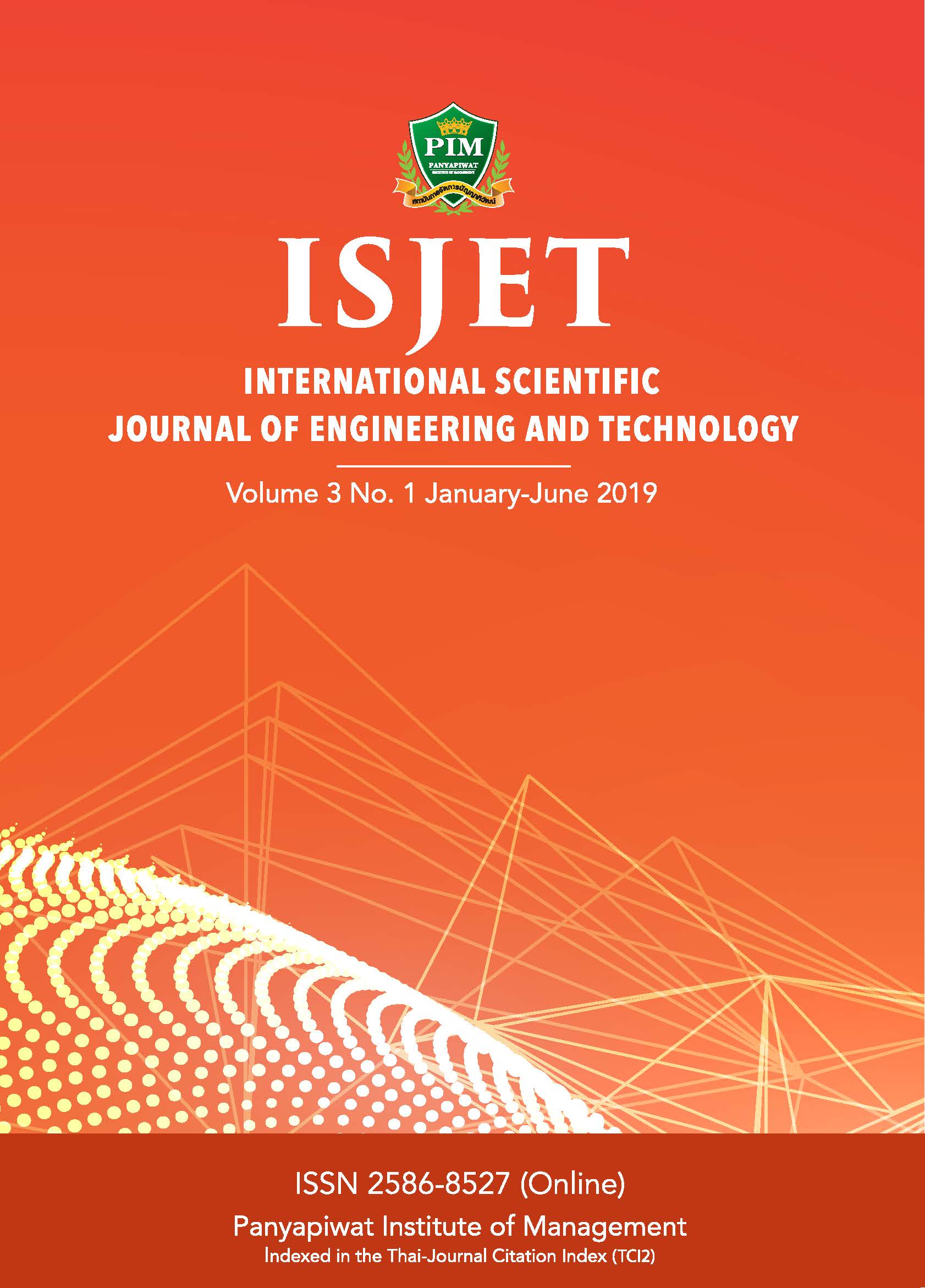Assessment of Mental Workload by Subjective Analysis Technique and Electroencephalography in the Sample Program Testing
Main Article Content
Abstract
The purpose of this research was to study the assessment of mental workload by subjective analysis technique and electroencephalography in the sample program testing. The different types of the workload were assessment as follow: Evaluation of Posture Operation by RULA, Windows and Android operating systems and Manual. A performance of the research was divided on these three parts. First, studied and reviewed of the evaluation. Second, applied the evaluation form, NASA TASK LOAD INDEX (NASA-TLX) and compared with the brainwave of electroencephalography (EEG). Third, estimated and compared the performance of workload. A result of the assessment of mental workload by subjective analysis technique and electroencephalography. It can be concluded that. Evaluation of Posture Operation by RULA method. The heaviest workload is evaluated work postures using manual calculations. The minimum workload is RulaSU Android operating system.
Article Details
เนื้อหาข้อมูล
References
[2] K. Intranon. “Ergonomics,” Bangkok, Chulalongkorn University Press, 2005.
[3] P. Klomjit. “Evaluating and improving the workplace in an ergonomic setting,” Silpakhon Printing House, 2013.
[4] D. O. N. Diban and L. Amaral, “The Complexity of Ergonomic in Product Design Requirements,” in Proc.AHFE
2015, pp. 6169-6174.
[5] J.J. Shih, D.J. Krusienski, and J. R. Wolpaw, “Medicine. In Mayo Clinic Proceedings.” Elsevier Inc. vol. 87, no. 3,
pp. 268-279, Mar. 2012.
[6] T. D’Albis, R. Blatt, R. Tedesco, and L. Sbattella, “A Predictive Speller for a Brain Computer Interface Based on Motor
Imagery.”in Conf. ACM SIGCHI Conference on Human Factors in Computing Systems (CHI 13). Apr. 2013.
[7] M. Geiser and P. Walla, “Objective Measures of Emotion During Virtual Walks through Urban Environments.” appl. Sci., vol. 1, no. 1, pp. 1-11, 2011.
[8] A. Ramkumar, P. J. Stappers, W. J. Niessen, S. Adebahr, T. Schimek-Jasch, U. Nestle, and Y. Song, “Using GOMS and NASA-TLX to Evaluate Human–Computer Interaction Process in Interactive Segmentation.” International Journal
of Human–Computer Interaction. vol. 33, no. 2, pp. 123-134, Oct. 2016.
[9] Y. Liu , J. M. Ritchie, T. Lim, Z. Kosmadoudi, A. Sivanathan, and R.C.W. Sung, “A fuzzy psycho-physiological approach to enable the understanding of an engineer’s affect status during CAD activities,” Computer-Aided Design, vol. 54, pp. 19-38, Sep. 2014.


